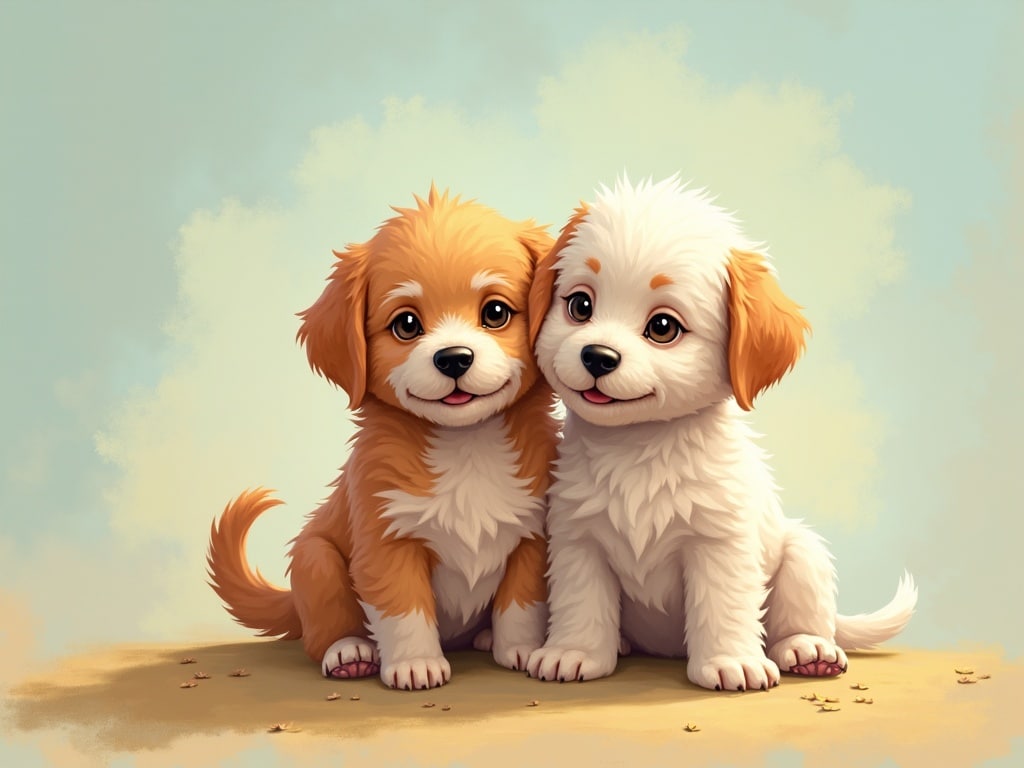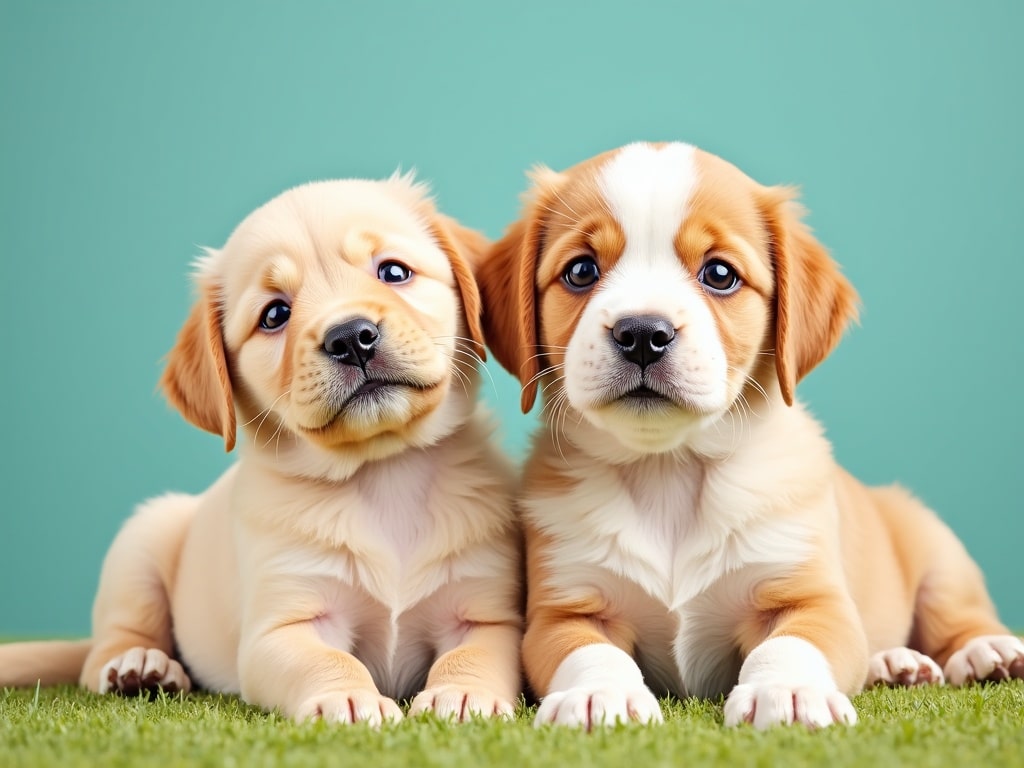Double the Trouble, Zero the Mess: The Ultimate Guide to Potty Training Two Puppies at Once
Introduction: The Two-Puppy Potty Predicament
Bringing one puppy into your home is a joy, but welcoming two at once? That's an adventure! Doubling the fluff also means doubling the responsibility – especially when it comes to potty training. The good news? It's absolutely achievable. This guide will walk you through the unique challenges and triumphs of teaching two little ones where go goes, transforming your dynamic duo into house-trained champions.
Unique Challenges of Potty Training Two Puppies Simultaneously
Potty training is rarely a walk in the park, but juggling two puppies presents some distinct hurdles. One of the biggest is the potential for one puppy to learn bad habits from the other. If one has an accident indoors, the other might see it as an acceptable behavior. Competition for your attention can also complicate things. Each pup needs individual focus and praise during training, which can be tough to manage.
Age and Breed: How They Affect Potty Training Success in Multi-Puppy Households
A puppy's age at the start of training makes a big difference. Ideally, you want to begin as soon as they come home, usually around 8-12 weeks. Younger puppies have less bladder control, requiring more frequent trips outside. Breed also plays a role. Smaller breeds often have smaller bladders and may need more frequent potty breaks. Intelligent and eager-to-please breeds, like Border Collies or Poodles, might grasp the concept faster than more independent breeds.
Essential Supplies for Potty Training Two Puppies
Equipping yourself with the right tools can significantly streamline the potty training process. Here’s your shopping list:
- High-Quality Puppy Food: Diet impacts digestion and, subsequently, potty schedules.
- Two Crates: More on crate training later, but each puppy needs their own den.
- Plenty of Absorbent Puppy Pads: For indoor accidents and establishing initial potty zones.
- Enzyme-Based Cleaner: Crucial for eliminating odors that might attract repeat offenses.
- Treats, Treats, and More Treats: Small, tasty rewards are key for positive reinforcement.
- Two Leashes and Collars/Harnesses: For controlled outdoor potty breaks.
- Poop Bags: Because, well, you know.
Creating a Consistent Potty Training Schedule: A Step-by-Step Guide
Consistency is king (or queen!) when potty training. Here’s a sample schedule you can adapt:
- Morning Potty Break: First thing after waking up.
- After Breakfast: Within 15-30 minutes of eating.
- Mid-Morning Potty Break: Especially important for younger puppies.
- After Playtime: Excitement often leads to accidents.
- After Lunch: Again, within 15-30 minutes of eating.
- Afternoon Potty Break: To prevent accidents.
- After Playtime: Another opportunity.
- After Dinner: You guessed it, 15-30 minutes after.
- Before Bedtime: The last potty break of the night.
Take both puppies out at the same time, to the same designated potty spot in your yard. Say a command like go potty or empty, and wait patiently. If they both go, reward them enthusiastically with praise and treats. Even if only one goes, praise that one and bring them both back inside.
The Importance of Separate Potty Breaks and Individual Attention
While simultaneous potty breaks are efficient, individual attention is equally vital. Schedule short, separate training sessions with each puppy. This allows you to focus on their individual progress and address any specific challenges they might be facing. It also strengthens your bond with each puppy, which is crucial for effective training.
Identifying and Managing Common Potty Training Accidents with Two Puppies
Accidents happen, especially with two puppies in the mix. The key is to react calmly and constructively.
- Clean Immediately: Use an enzyme-based cleaner to eliminate odors.
- Don’t Punish: Punishment can create fear and anxiety, hindering progress.
- Watch for Signals: Learn to recognize signs like circling, sniffing, or squatting.
- Adjust Schedule: If accidents are frequent, increase potty breaks.
Positive Reinforcement Techniques for Training Two Puppies
Positive reinforcement is the most effective way to potty train any puppy, let alone two. When they eliminate outside, shower them with praise, offer a small treat, and use a happy, encouraging tone. Consistency is key: every time they go outside, reward them. This creates a positive association with going potty in the right place.
Crate Training Considerations: Benefits and Drawbacks
Crate training can be a valuable tool, providing each puppy with a safe den and aiding in potty training. Puppies naturally avoid eliminating where they sleep. However, it's vital that each puppy has their own crate. Never force them inside, and make it a positive experience with toys and treats. Don't leave them crated for excessive periods; they need regular potty breaks and socialization.
Addressing Potty Training Regression in One or Both Puppies
Regression can occur due to stress, changes in routine, or medical issues. If one or both puppies start having accidents after being reliably house-trained, rule out medical causes with a vet visit. Then, re-evaluate your schedule, reinforce positive behaviors, and be patient. Sometimes, a step back is necessary before moving forward again. Check out this article for tips on essential steps on how to housebreak a new puppy successfully
When to Seek Professional Help from a Dog Trainer or Veterinarian
If you're struggling despite your best efforts, don't hesitate to seek professional help. A certified dog trainer can provide personalized guidance and address specific challenges. A veterinarian can rule out underlying medical conditions that might be contributing to the problem.
Socialization During Potty Training: Balancing Indoor Routines and Outdoor Exposure
Potty training shouldn't come at the expense of socialization. Expose your puppies to a variety of sights, sounds, and people in a safe and controlled manner. Take them for short walks (after they've had their vaccinations), introduce them to other friendly dogs, and let them explore new environments. Socialization builds confidence and reduces anxiety, which can positively impact potty training. Consider incorporating outdoor play sessions *aftersuccessful potty breaks, using it as a reward and encouraging them to go before getting to play.
Cleaning Up After Two Puppies: Effective Odor Removal and Hygiene Practices
With two puppies, cleaning is a constant task. Invest in a high-quality enzyme-based cleaner to thoroughly eliminate odors. Regular vacuuming and washing of bedding are crucial. Keep potty areas clean and sanitized to prevent the spread of germs. Remember, odor control is not just about cleanliness; it's also vital for preventing repeat offenses.
Common Mistakes to Avoid when Potty Training Two Puppies Together
Steer clear of these common pitfalls:
- Comparing Progress: Every puppy learns at their own pace.
- Inconsistent Schedules: Stick to a routine as much as possible.
- Punishment: It's counterproductive and damages the bond.
- Ignoring Accidents: Clean them thoroughly to remove odors.
- Lack of Supervision: Constant monitoring is essential.
Long-Term Maintenance and Consistency After Initial Success
Once your puppies are reliably house-trained, don't abandon the routine entirely. Continue to take them out regularly, especially after meals and before bedtime. Reinforce good habits with occasional praise and treats. Be vigilant for any signs of regression and address them promptly. Consistency is key to maintaining long-term success. For another resource, check out The Ultimate Guide: How to House Train Two Puppies Simultaneously.
Real-Life Success Stories: Inspiration and Tips from Owners Who Have Potty Trained Two Puppies
Reading about other owners' experiences can be incredibly motivating. Many successful owners emphasize the importance of patience, consistency, and individual attention. They also highlight the joy of watching their puppies learn and grow together. Remember, you're not alone on this journey. Here’s some tips collected from owners who have achieved success:
- “We kept a detailed log of each puppy’s potty habits for the first few weeks. It helped us predict when they needed to go out.”
- “Separate training sessions were a game-changer. It allowed us to focus on each puppy’s unique needs.”
- “Don’t be afraid to ask for help! A dog trainer gave us invaluable tips on dealing with accidents.”
Conclusion: Potty Training Triumph!
Potty training two puppies at once might seem daunting, but with a consistent schedule, positive reinforcement, and plenty of patience, you can achieve success. Embrace the challenges, celebrate the milestones, and enjoy the unique bond you're building with your dynamic duo. Soon, you'll have two house-trained companions ready to explore the world – one accident-free step at a time.


